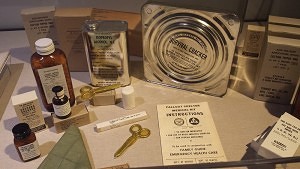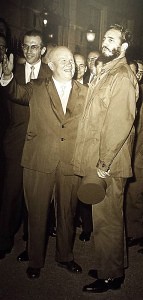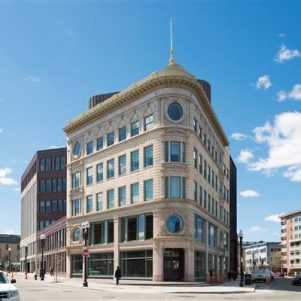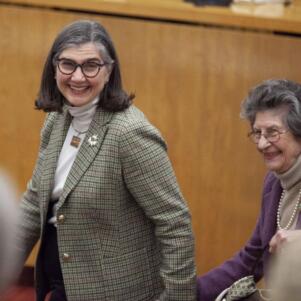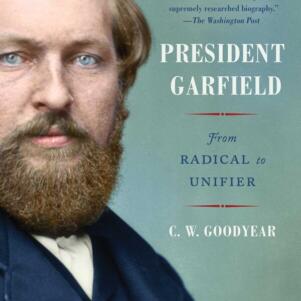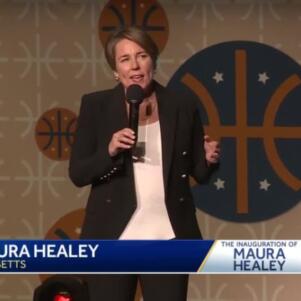To the Brink: JFK and the Cuban Missile Crisis exhibit
By Mary McCleary | August 14, 2015, 11:00 EDT
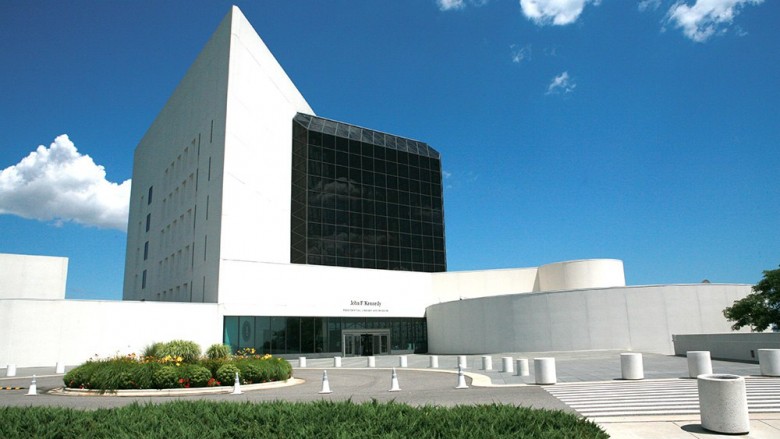 Courtesy of Tom Fitzsimmons/JFK Library Foundation
Courtesy of Tom Fitzsimmons/JFK Library Foundation On Dec. 17, 2014, President Barack Obama announced that the U.S. would normalize diplomatic relations with Cuba. A timely exhibit at the JFK Library, “To the Brink,” highlights the Cuban Missile Crisis and the 13 terrifying days when the world faced nuclear holocaust. In the unsettling words of the introduction, “it was a close call — maybe the closest call in human history … and the end of civilization as we know it.”
In 1959, Communist revolutionary Fidel Castro overthrew dictator Fulgencio Batista, and relations between the U.S. and Cuba deteriorated rapidly as Castro seized American oil and business holdings, and formed close ties with the Soviet Union. The U.S. responded by severing diplomatic relations and instituting a trade embargo.
In March 1960, President Dwight Eisenhower authorized a CIA plot to overthrow Castro’s communist government. On April 17, 1961, President John F. Kennedy approved the order for CIA operatives to join Cuban counter-revolutionaries at the Bay of Pigs and invade the island. Within three days, under Fidel Castro’s command the Cuban army overwhelmed the American-led forces. It was a humiliating defeat for both Kennedy and the U.S. government.
Tensions reached a crescendo in October 1962, when Soviet Premier Nikita Khrushchev began sending nuclear weapons to Cuba within a 90-mile striking distance of the U.S. For two weeks, the world waited in perilous limbo as Kennedy ordered a blockade around Cuba to prevent the missile installation. In his Oct. 22 address to the nation, Kennedy vowed to launch a full retaliatory strike should the Soviet nuclear weapons be deployed.
During the crisis, Kennedy negotiated calmly but firmly with the Kremlin. He also met with his group of advisors, known as the Ex Comm, and secretly recorded their White House meetings. The JFK Library exhibit has a number of interesting excerpts from these recordings, as well as other artifacts from the historic standoff. It also contains original documents, such as Kennedy’s Oct. 22, 1962 speech and his handwritten notes from the Ex Comm meetings.
Other notable items on display include communications from various Politburo leaders during the crisis. One statement in particular shows just how unfamiliar the Soviets were with Kennedy’s unwavering resolve: the Russian defense minister told Khrushchev that “there will be no big reaction from the U.S. side” to the deployment of nuclear weapons in Cuba.
But Kennedy was a fervent anti-Communist, and was committed to containing Soviet influence and expansion. An excerpt from the president’s Sept. 25, 1961 speech displayed at the museum corroborates this point: “The Communist empire … which knows only one party and one belief … suppresses free debate, and free elections, and free newspapers and free books and free trade unions — and … builds a wall to keep truth a stranger and its own citizens prisoners.” Notice the frequency with which Kennedy uses the word “free,” contrasting cherished American rights with their suppression in communist regimes.
The museum’s large photo collection is extensive, including rare pictures of Khrushchev and Castro in New York on September 23, 1960. The exhibit also features objects from President Kennedy’s nationwide program to build fallout shelters. One of the displays contains medical and food supplies that were distributed to the public.
The crisis concluded peacefully when Khrushchev agreed to remove the Cuban missiles and Kennedy promised not to invade Cuba and to eliminate American missiles in Turkey. Out of every evil comes some good – and this near catastrophe was no exception. Kennedy resolved to prevent future nuclear confrontations in his “Strategy of Peace” speech on June 10, 1963, which is featured at the exhibit. The president called for a de-escalation of the arms race in the memorable words: “I realize the pursuit of peace is not as dramatic as the pursuit of war … But we have no more urgent task.”
Ten days after this speech, the U.S. and Soviet Union created a “hotline” to avert further crises, and signed a Nuclear Test Ban Treaty a few months later. The hotline was a crucial remedy to the 12-hour message delays between Kennedy and Khrushchev during the Cuban Missile Crisis due to an antiquated communication system. Both the teletype equipment and the Nuclear Test Ban Treaty are also on display at the exhibit.
“To The Brink” will be featured at the Kennedy Library through December 2015.
Contact Mary McCleary at [email protected]
Also by Mary McCleary:
An inventor’s legacy at Hammond Castle

